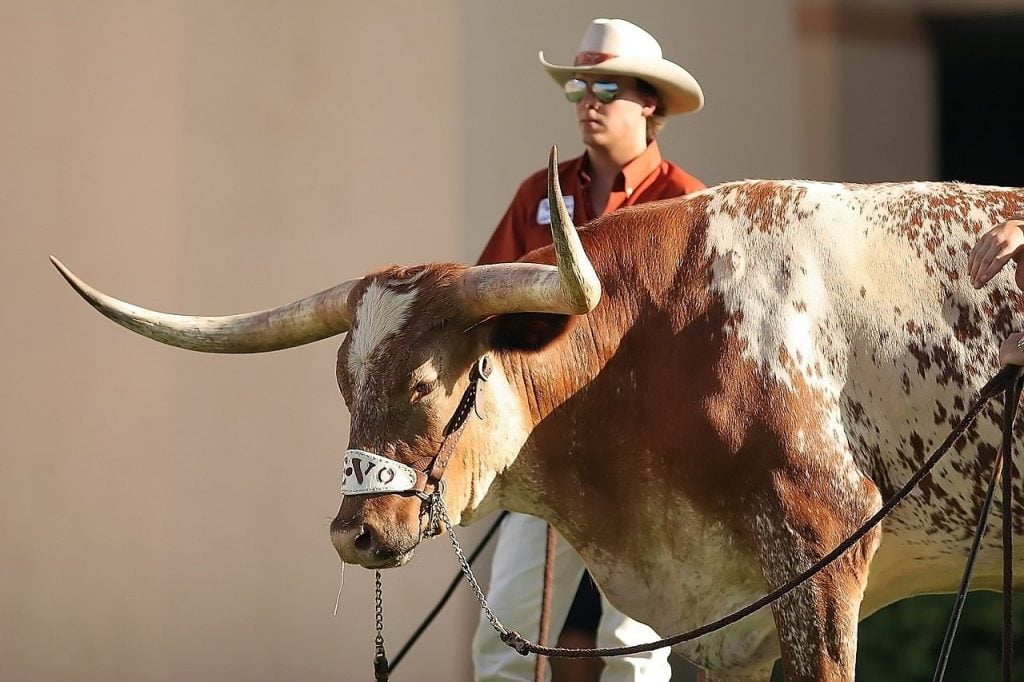Colleges and Universities in Texas

Find your perfect value college
Higher Education in Your State:
ALAKAZARCACOCTDCDEFLGAHIIDILINIAKSKYLAMEMDMAMIMNMSMOMTNENVNHNJNMNYNCNDOHOKORPARISCSDTNTXUTVTVAWAWVWIWY
Texas is the second-largest state in the nation by size and population, with deserts and pine forests winding around thriving metropolitan cities or farmland. Texas culture has always claimed to be its own kind of south, and the self-proclamation couldn’t be truer. Texas is more than cowboys, cattle, and the Alamo. Today it is a booming economic center and a key contributor to America’s wealth and power. In fact, you may be surprised to learn, that were Texas a country, it would be the tenth-largest economy in the world!
Featured Programs
Texas: Diversity and Responsibility in Higher Education
Historically the four major industries in Texas included cattle and bison, timber, cotton, and of course, oil and while these industries do still thrive today––especially oil––other industries have grown to make Texas the economic mecca it is today. These include agriculture, energy, aerospace, biomedical science, petrochemicals, computers, and electronics, and since 2002 the state of Texas has led the nation in state export revenue.
Keeping up with the booming Texas economy is no easy task for the higher education departments and institutions. In recent years, the state has made efforts to expand the number of flagship universities by elevating some of the emerging research institutions statewide, including the Carnegie Foundation Tier One recognized by the University of Texas as Austin, Texas A&M University, and the University of Houston.
Additionally, the state is made up of a diverse population both racially and socio-economically, meaning higher education institutions have a plethora of angles to explore when aiming to serve the entirety of the state’s residents. An initiative called Closing the Gaps was developed by the Texas Higher Education Coordinating Board (THECB) to provide higher education opportunities to all citizens of Texas who may benefit.
Higher Education in Texas
The Texas Higher Education Coordinating Board (THECB) ranks the state’s 35 public universities into three distinct tiers. These are Tier 1 with 4 National Research Universities, Tier 2 with 6 Emerging Research Institutions, and Tier 3 which is made up of the remaining 25 public universities. In addition to the large public university system that is a number of private institutions as well, from liberal arts colleges to other nationally ranked research institutions such as Rice University or Trinity University.
In Texas, all resident students who graduate high school in the top 10% are granted automatic admission to any state-funded university in the state. House Bill 588 was passed in 1997 and has been a controversial ruling over the years, though it is still in effect today. The bill promotes the retention of promising students who can attend college or university locally in the hopes that the student gives back to the state as a reputable adult and desirable leader upon graduation.
Texas’ Online Degree Programs
The state of Texas University System participates in offering a comprehensive collection of fully and partially online degree programs from the associates to doctorate levels. Online students in Texas can choose from a massive catalog of courses that are compiled by the in-network universities, giving online attendees more options when it comes to coursework.
In addition to the online programs offered by public institutions, many of the state’s smaller, private universities also offer unique online programs. For example, Wayland Baptist University offers over 25 fully online degree programs and offers special services for students with disabilities or veterans.
Paying for College in Texas
Texas has always been known to be a state proud of its heritage and people, and the state has made efforts to make attending college in Texas easy for all residents. However, with rising tuition costs annually, the state––and the state’s residents––are finding paying for college more difficult each year. For this reason, programs like the Texas Tomorrow Funds are emerging. The program offers a way for parents and grandparents to lock away current tuition prices for their children who will be attending college later.
There are a handful of scholarships and grants available to Texas residents such as the Education and Training Voucher program for Youth Aging out of Foster Care. The vouchers offer up to $5000 per foster youth annually to assist with college tuition fees and costs. On an institutional level initiatives like the Permanent University Fund has helped to fund the rapid growth of both the University of Texas System and the Texas A&M system by providing annual and long term funding and support.
The Essential Guide to Online Education in the USA:
Related Rankings:
- Top 25 Best Value Online Colleges
- Top 25 Lowest Out-of-State Tuition Colleges
- Top 50 Best Value Community Colleges
- Top 50 Best Value Online Graduate Schools
- Essential Guide to Online education in the USA
Featured Programs
Aya Andrews
Editor-in-Chief
Aya Andrews is a passionate educator and mother of two, with a diverse background that has shaped her approach to teaching and learning. Born in Metro Manila, she now calls San Diego home and is proud to be a Filipino-American. Aya earned her Masters degree in Education from San Diego State University, where she focused on developing innovative teaching methods to engage and inspire students.
Prior to her work in education, Aya spent several years as a continuing education consultant for KPMG, where she honed her skills in project management and client relations. She brings this same level of professionalism and expertise to her work as an educator, where she is committed to helping each of her students achieve their full potential.
In addition to her work as an educator, Aya is a devoted mother who is passionate about creating a nurturing and supportive home environment for her children. She is an active member of her community, volunteering her time and resources to support local schools and organizations. Aya is also an avid traveler, and loves to explore new cultures and cuisines with her family.
With a deep commitment to education and a passion for helping others succeed, Aya is a true inspiration to those around her. Her dedication to her craft, her community, and her family is a testament to her unwavering commitment to excellence in all aspects of her life.



